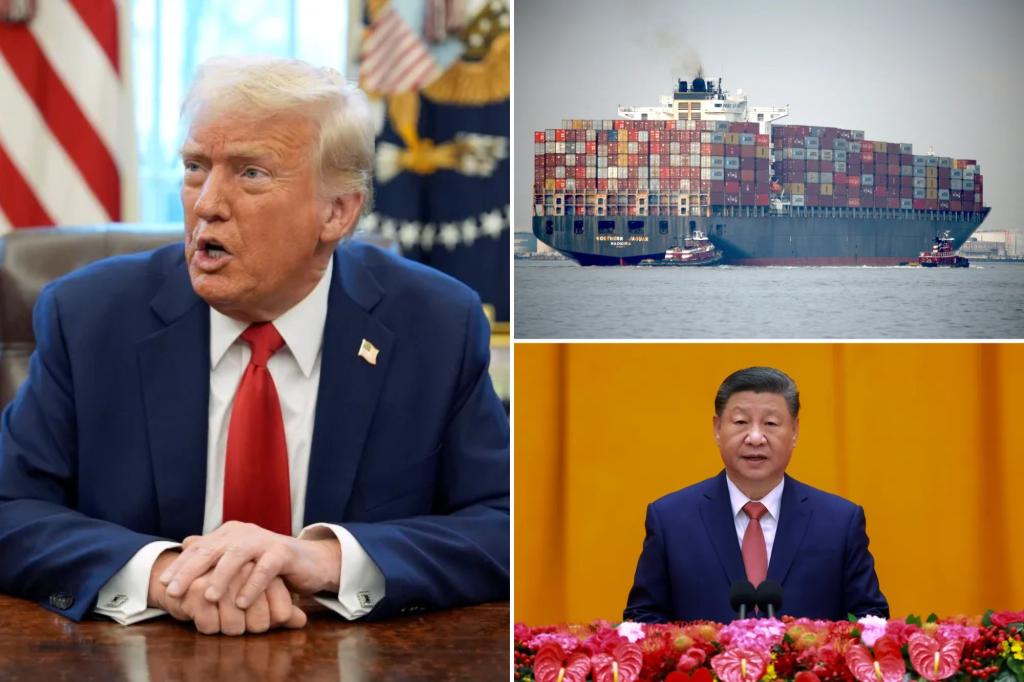The escalating fentanyl crisis in the United States has prompted President Trump to implement new tariffs on Chinese goods, marking another chapter in his administration’s multifaceted approach to combating the opioid epidemic. Effective Tuesday, a 10% tariff was levied on a range of Chinese imports, a move intended to pressure Beijing into cracking down on the production and export of precursor chemicals used in fentanyl manufacturing. This decision comes on the heels of successful negotiations with Mexico and Canada, resulting in a temporary reprieve from previously threatened 25% tariffs, contingent on increased border security measures and cooperation in addressing drug trafficking. The administration frames these tariffs as a necessary tool to protect national security and combat the devastating impact of fentanyl, which has claimed hundreds of thousands of American lives in recent years.
The White House asserts that these tariffs are not indicative of a trade war, but rather a strategic measure in a “drug war” against fentanyl. The administration argues that access to the American market is a privilege, and tariffs serve as leverage to compel China to address the flow of fentanyl precursors. They point to the staggering death toll attributed to fentanyl over the past four years, emphasizing the urgency of the situation and the need for decisive action. The administration maintains that China bears significant responsibility for the fentanyl crisis, accusing the Chinese Communist Party of deliberately exporting the drug to undermine the United States. This assertion, however, is vehemently denied by Beijing.
China, for its part, rejects the accusations and criticizes the tariffs as a violation of World Trade Organization rules. Chinese officials contend that their country has already implemented stringent counternarcotics policies and argue that the fentanyl problem is primarily a domestic issue for the United States to resolve. They urge the Trump administration to address the root causes of the crisis within its own borders, rather than resorting to trade measures that could further strain bilateral relations. Beijing maintains that it has been actively combating drug trafficking and calls for a collaborative approach based on mutual respect and understanding.
Beyond the immediate focus on fentanyl, the tariffs also reflect the Trump administration’s broader concerns about the US trade deficit with China and its commitment to promoting domestic manufacturing. China remains America’s largest source of imports, and the administration views tariffs as a mechanism to incentivize companies to produce goods within the United States, thereby boosting the domestic economy and reducing reliance on foreign manufacturers. This approach has been a hallmark of Trump’s trade policy, reflecting his “America First” philosophy and his determination to level the playing field in international trade.
While the tariffs on Chinese goods took effect, the administration managed to avert similar measures against Mexico and Canada through diplomatic negotiations. Mexico agreed to deploy 10,000 National Guard troops to its border with the US to enhance efforts against drug trafficking, securing a 30-day pause on the impending tariffs. Canada, similarly, committed to a $1.3 billion border plan, including increased personnel, technology, and the appointment of a “Fentanyl Czar,” in exchange for a temporary reprieve from the tariffs. These agreements demonstrate the administration’s willingness to leverage tariffs as a bargaining chip to secure cooperation from neighboring countries in addressing the fentanyl crisis and strengthening border security.
The implementation of these tariffs underscores the complexity of the fentanyl crisis and the multifaceted approach adopted by the Trump administration to combat it. The administration’s strategy encompasses a combination of trade measures, diplomatic negotiations, and domestic law enforcement initiatives, all aimed at stemming the flow of fentanyl into the United States and addressing the devastating consequences of opioid addiction. The long-term effectiveness of these measures remains to be seen, as do the broader implications for US-China relations and the global trade landscape. The administration’s actions have sparked debate both domestically and internationally, with critics raising concerns about the potential for escalating trade tensions and the impact on consumers and businesses. The fentanyl crisis continues to pose a significant challenge, demanding a comprehensive and sustained effort from all stakeholders to effectively address its root causes and mitigate its devastating consequences.

